|
|
Immediately after the Rhodes Centre was opened in 1963, its committee engaged two promoters: one to organise prestigious weekend events and another, a local organisation called Limelight Promotions, to take responsibility for filling mid-week spots.
Live music in the town had earlier been made popular with the creation of the Mitre Jazz Club (See Guide 14), and though it had closed the previous year at Long’s Ballroom because of falling attendances and a change in musical taste, promoters lost no time in forming the Rhodes Jazz Club. It survived for just one year but brought live jazz music back to the town.
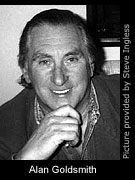 Limelight Promotions eventually took over all promotional work at the Rhodes Centre, but disagreements between themselves and representatives of the Rhodes Committee soon soured the relationship and their contract was terminated early in 1964. A local promoter, 24 year-old Alan Goldsmith, originally from Barrells Down Road, stepped in and quickly made his mark.
Limelight Promotions eventually took over all promotional work at the Rhodes Centre, but disagreements between themselves and representatives of the Rhodes Committee soon soured the relationship and their contract was terminated early in 1964. A local promoter, 24 year-old Alan Goldsmith, originally from Barrells Down Road, stepped in and quickly made his mark.
His first bookings for the Rhodes Centre was a group named The Four Pennies, backed by the outrageous Screaming Lord Sutch and the Savages, and just two days later, on Saturday 9 May 1964, he secured one of the biggest pop stars around at that time, the legendary Gene Vincent. Tickets cost 6s. 6d. (32p). It was this sell-out event that led to the Rhodes Centre becoming one of the most prestigious venues on the music circuit.
|
 |
|
|
|
Artists that appeared at Rhodes
|
|
Some of the more famous and familiar names to appear at the Rhodes Centre between 1964 and 1967 were:
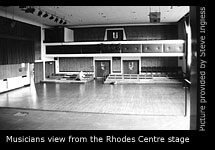 Acker Bilk and his Paramount Jazz Band; The Casuals; The Four Pennies; Screaming Lord Sutch; Gene Vincent; The Pretty Things; The Yardbirds; The Nashville Teens; The Seekers; Terry Lightfoot's New Orleans Jazzmen; The Chris Barber Band; The Tornados; Wayne Fontana and the Mindbenders; The Mojos; Twinkle; The Small Faces; The Animals; Stevie Wonder; Dave Dee, Dozy, Beaky, MIck and Titch; The Spencer Davis Group; Eden Kane; Pinkertons Assorted Colours; Billy J Kramer and the Dakotas; The Drifters; The Who; Lulu and the Luvvers; The Troggs; David Bowie and the Buzz; Edwin Starr; Billy Fury; David Essex; The Move; Pink Floyd; Cream; Marmalade; P.P. Arnold; Robert Plant and the Band of Joy 1968 (pre Led Zeppelin); Gino Washington and the Ram Jam Band; John Mayall; John Lee Hooker; Julie Driscoll; Rod Stewart; Georgie Fame and the Blue Flames; Cat Stevens. Acker Bilk and his Paramount Jazz Band; The Casuals; The Four Pennies; Screaming Lord Sutch; Gene Vincent; The Pretty Things; The Yardbirds; The Nashville Teens; The Seekers; Terry Lightfoot's New Orleans Jazzmen; The Chris Barber Band; The Tornados; Wayne Fontana and the Mindbenders; The Mojos; Twinkle; The Small Faces; The Animals; Stevie Wonder; Dave Dee, Dozy, Beaky, MIck and Titch; The Spencer Davis Group; Eden Kane; Pinkertons Assorted Colours; Billy J Kramer and the Dakotas; The Drifters; The Who; Lulu and the Luvvers; The Troggs; David Bowie and the Buzz; Edwin Starr; Billy Fury; David Essex; The Move; Pink Floyd; Cream; Marmalade; P.P. Arnold; Robert Plant and the Band of Joy 1968 (pre Led Zeppelin); Gino Washington and the Ram Jam Band; John Mayall; John Lee Hooker; Julie Driscoll; Rod Stewart; Georgie Fame and the Blue Flames; Cat Stevens.
|
|
|
|
|
|
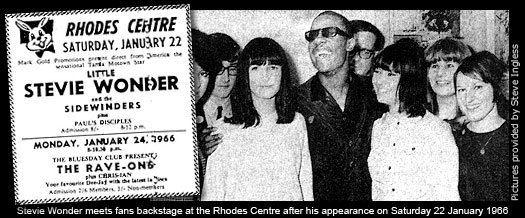 |
|
|
|
|
|
The revolution in 'home-grown' popular music began in the early 1960s with the Beatles, whose extraordinary talent spawned numerous groups and solo artists all searching for the same stardom. But music coverage at that time was nothing like the big business it is today.
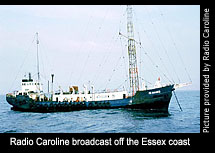 Those youngsters lucky enough to own a transistor radio had just two choices to listen to pop music, and both were limited. Radio Luxemburg transmitted from the continent to a small UK audience, but only in the evenings; and the BBC’s Light Programme broadcast Saturday Club for two hours on a Saturday morning and Top of the Pops on a Sunday afternoon. Only those fortunate enough to have access to a black and white television set were able to see their favourite artists perform on shows like Six-Five Special, Juke Box Jury and Ready Steady Go! But the 'famous' and not so famous pop groups and solo artists all promoted themselves by touring the country and playing in local cinemas and halls.
Those youngsters lucky enough to own a transistor radio had just two choices to listen to pop music, and both were limited. Radio Luxemburg transmitted from the continent to a small UK audience, but only in the evenings; and the BBC’s Light Programme broadcast Saturday Club for two hours on a Saturday morning and Top of the Pops on a Sunday afternoon. Only those fortunate enough to have access to a black and white television set were able to see their favourite artists perform on shows like Six-Five Special, Juke Box Jury and Ready Steady Go! But the 'famous' and not so famous pop groups and solo artists all promoted themselves by touring the country and playing in local cinemas and halls.
|
|
|
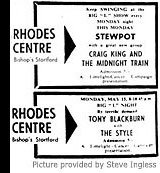 The biggest change in the way pop music could be heard by the public came in 1964 with the advent of Pirate Radio stations – commercial enterprises who broadcast music 24 hours a day, seven days a week from ships anchored three miles off the coast of Britain. This was necessary because at that time mainland based commercial radio stations were outlawed by the British Government, and British territorial waters ended three miles off the mainland. The most prolific and popular stations able to be received in this area were Radio Caroline* and Radio London – both broadcasting off the Essex coast near Frinton. The biggest change in the way pop music could be heard by the public came in 1964 with the advent of Pirate Radio stations – commercial enterprises who broadcast music 24 hours a day, seven days a week from ships anchored three miles off the coast of Britain. This was necessary because at that time mainland based commercial radio stations were outlawed by the British Government, and British territorial waters ended three miles off the mainland. The most prolific and popular stations able to be received in this area were Radio Caroline* and Radio London – both broadcasting off the Essex coast near Frinton.
Never slow to miss an opportunity, the Rhodes Centre formed the Big L Club in February 1967, a regular event that featured Disc Jockies from Radio London and Radio Caroline playing records to a paying audience. It was lucrative for both parties. The most well known DJs regularly appearing here at that time were: Tony Blackburn, Pete Drummond, John Peel, Keith Skues and Ed Stewart.
|
|
|
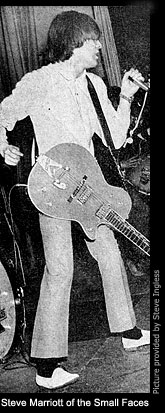 But these events came to an abrupt end in August 1967 when parliament passed The Marine Offences Bill, making it illegal for commercial radio stations to broadcast on the mainland or off the coast of Britain. The BBC, finally realising the potential audience for pop music launched their own Radio One in September that same year.
But these events came to an abrupt end in August 1967 when parliament passed The Marine Offences Bill, making it illegal for commercial radio stations to broadcast on the mainland or off the coast of Britain. The BBC, finally realising the potential audience for pop music launched their own Radio One in September that same year.
By this time, though, the music scene was changing yet again and with the advent of discothèques, young people slowly drifted away from the Rhodes events. Alan Goldsmith, successful promoter of ‘live’ music at Rhodes, had no desire to be part of this new club scene and decided to terminate his contract. Wanting to go out on a high, his parting shot to the young people of Stortford was to book the highly successful group, Cream, who played here on his final night, 15 April 1967.
After that it was mainly local bands who filled the once prestigious Saturday night spot, and the occassional 'big' name. But by now the great days of live music at Rhodes were well and truly over. A brief revival of the town's music scene came in January 1968 with the opening of Rambling Jack’s Blues Club at The Railway Hotel (See Guide 12).
* Radio Caroline's heyday was between 1964 and 1967. Despite the Marine Offences Bill the station continued to broadcast from ships in various locations for many years, and in 2004 celebrated its 40th Birthday. Radio Caroline's history makes for fascinating reading. www.radiocaroline.co.uk
|
|
|
|
|
|
|
|
|
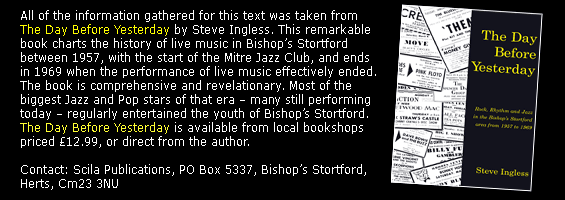 |
|
|
|
|
|

